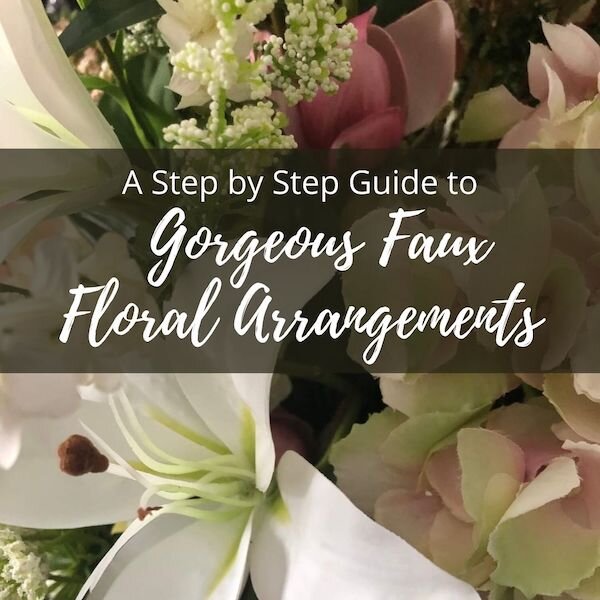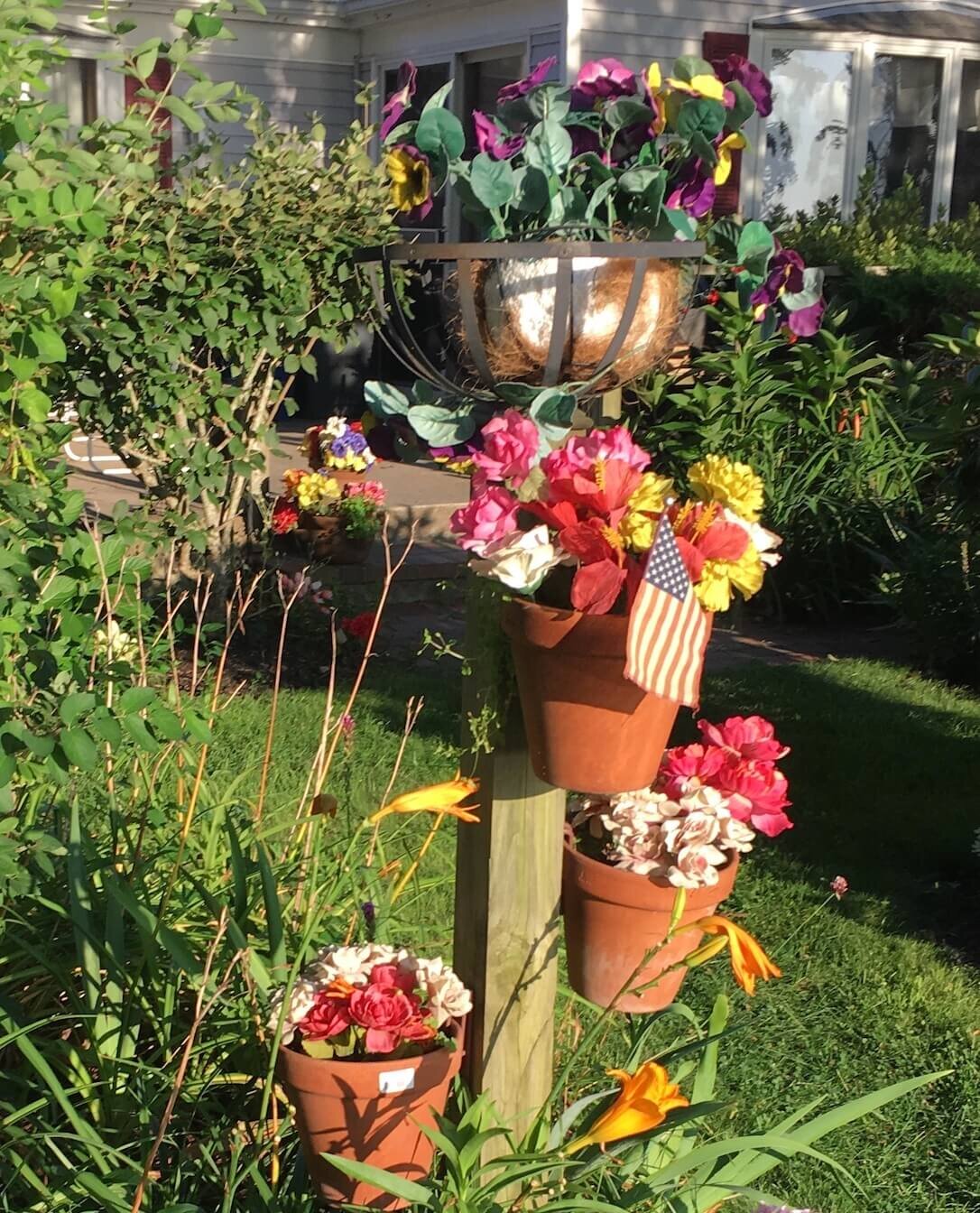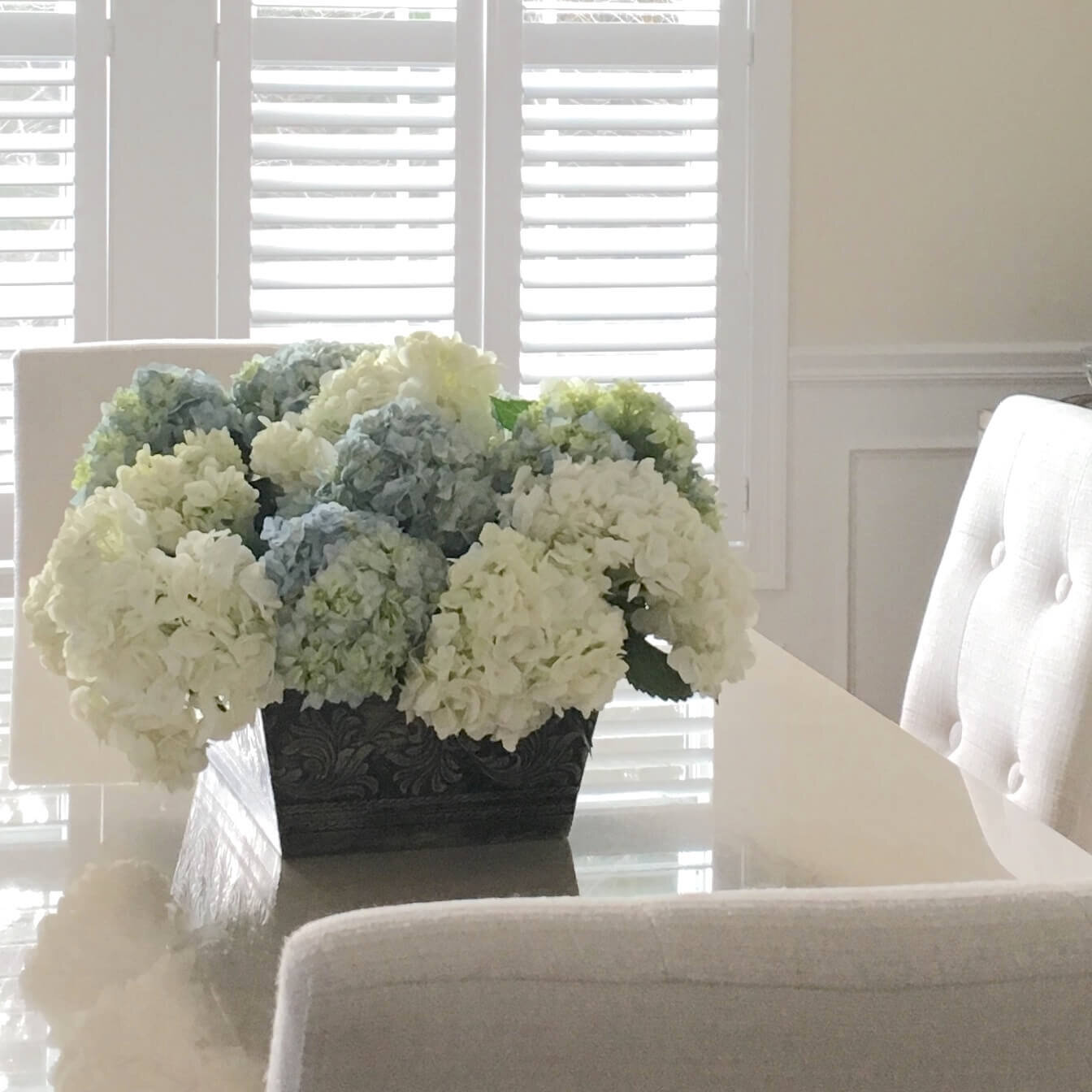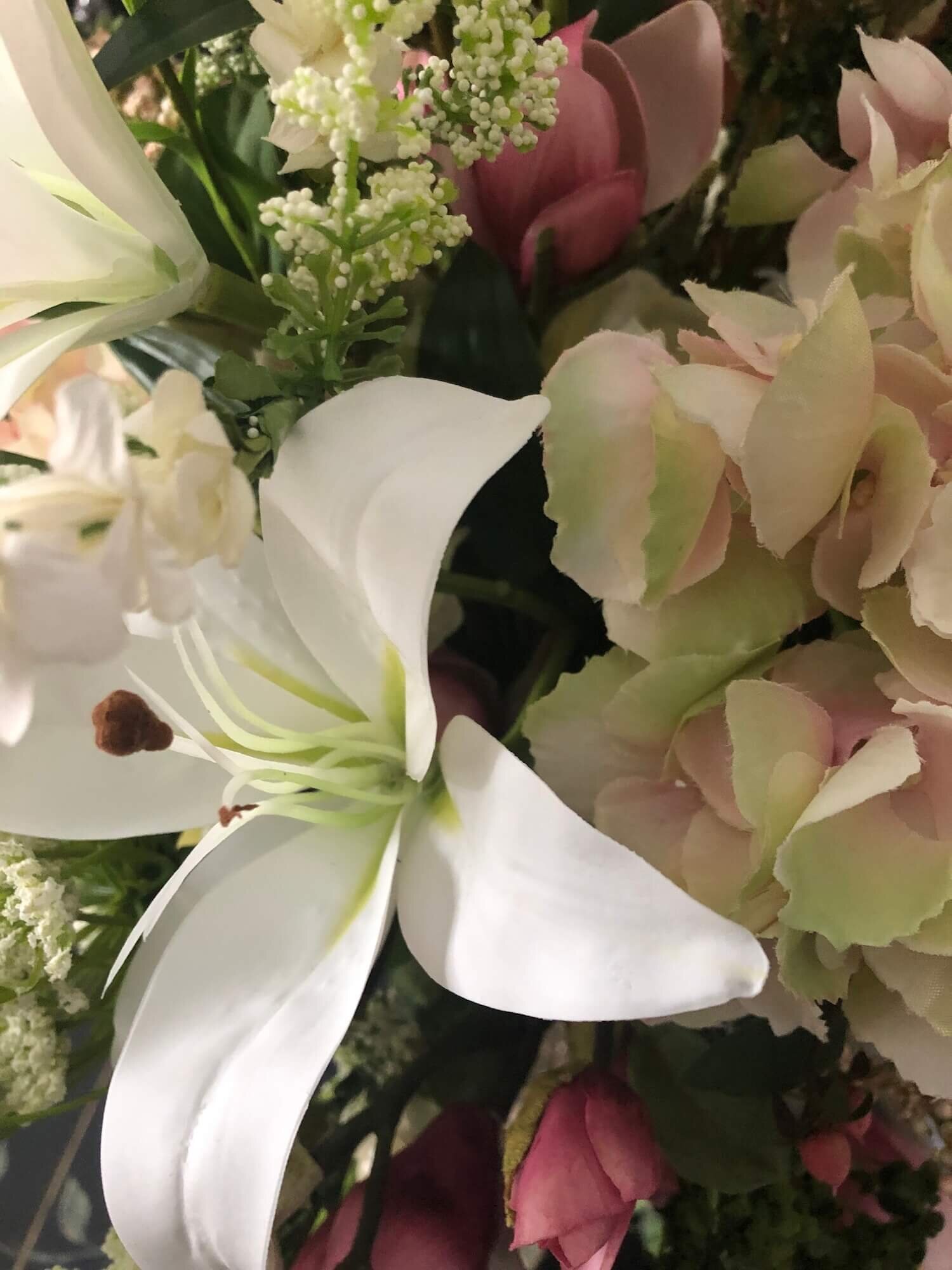Faux, silk, artificial floral arrangements, permanent botanicals (if you’re feeling fancy…), whatever way you say it, they all are about the same thing: fake floral arrangements. A rose by any other name and all that…
I may be in the minority among design snobs, but I like great looking faux arrangements. They have their advantages. Two of which are,
1.) they don’t require the daily maintenance of real flowers and
2.) they last much longer!
Faux flowers get a bad reputation for good reason, though. Reasons like this. I spotted this hot mess outside someone’s cape cottage a couple of summers ago…I don’t think the sad plastic flowers stuck in styrofoam are fooling anyone…
This is where cheap fake flowers go to die, apparently.
Don’t get me wrong, I LOVE real flowers, I just think there is a valid argument for nice faux arrangements as well.
And while great looking faux florals are not inexpensive, neither are real cut flower arrangements which only last a week.
Handcrafted faux hydrangeas
When you look at it that way, spending upwards of $200 on a faux arrangement that would have cost at least $150 in fresh flowers from a nice florist doesn’t seem quite as crazy. This pretty cut flower arrangement from a local high end florist is listed at $225
3 Foundational Secrets to a Beautiful Arrangement
You can totally DIY a beautiful faux floral arrangement as long as you follow a few guidelines.
Please note: this post contains affiliate links meaning I may make a small commission on any purchases at no extra cost to you.
Most importantly? Use faux that closely resembles real. Colors not found in nature and ANYTHING tinged with glitter need not apply. God did not make flowers with glitter and neither should anyone else. Beautiful artificial flowers are not cheap. I buy mine from to-the-trade sources, but you can often find nice ones at local garden centers. Craft stores and dollar stores are cheaper, but so is the look.
Choose your container wisely. Clear glass is generally a bad idea because there are VERY FEW stems on fake flowers that will pass for real not to mention the need to add water if you want your arrangement to be mistaken for real. Even a gaggle of real flower stems is not all that attractive! If you must use glass, maybe line it with large leaves to hide the stems.
Limit your color palette to three colors (green doesn’t count, as it serves as nature’s neutral) for the most elegant arrangements, and vary the shades and intensities for variety. Of course a riot of garden brights can also work, but it is trickier to pull off successfully.
I once read that when planning outdoor planters you should use a combo of thrillers, fillers, and spillers and the same holds true in any floral arrangement. There are exceptions, for sure - arrangements that are all one type of flower for example, like this box of hydrangea blossoms.
The 3 Key Elements of a Successful Floral Arrangement
THRILLERS are your largest or most attention grabbing blooms…hydrangeas, lilies, peonies, dahlias…Use an odd number of these (3 is usually adequate unless your arrangement is very large or your thrillers are a bit smaller)
FILLERS are your supporting cast of medium and smaller blooms. These should contrast with the thrillers and each other in color and shape. Berries, leaves, branches, lacy stems are all good candidates for these. Shape the stems so they resemble how real cut flowers would behave.
SPILLERS are the stems that cascade down from the container like artfully escaping tendrils of hair in an updo. Look for plants and stems that would naturally grow this way. Ivy is always a safe bet, as well as any cascading flower or green that might appear in a hanging planter or windowbox.
Start your arrangement with some floral foam wedged into your container or glued to the bottom if you are using something wide and shallow. PRO TIP: if you want to be able to reuse your container and need to glue your foam, put down a layer of duct tape first in the bottom so the glue adheres to that and you can peel it off later.
A bouquet of specially selected faux florals ready to become a beautiful arrangement
Add your thrillers first. Cut the stems using wire cutters and arrange them at varying heights - one near the top of the arrangement, one closer to the container, and one somewhere in between. Just like in shelf styling, you want to create a pleasing rhythm - your eye will connect like elements in any arrangement.
start your arrangement by placing your largest, showiest blooms
Next, add your fillers from largest/brightest to smallest/laciest, working your way around the arrangement again with the goal of creating a rhythm that moves around the arrangement, and filling in any gaps.
Finally, tuck in a few spillers to overlap the container and connect it visually to the arrangement
The beauty of faux flowers is you can now go back and manipulate them, turning and bending stems until you are happy with the overall look. Real flowers do not respond well to this, but faux flowers are very accommodating! Turn your container to make sure you are happy with the view from all sides and adjust as necessary.
Voila! Now you can enjoy your arrangement for many, many months. It won’t last forever - faux flowers get tired-looking, faded, and dusty eventually, but it will last a whole lot longer than fresh cut ones!
Other posts you might enjoy:
Easy elegant table centerpieces

















